Polar equation in this frame:
| next curve | previous curve | 2D curves | 3D curves | surfaces | fractals | polyhedra |
STROPHOIDAL CURVE
| From the Greek strophos "string, belt, braid". |
| For an initial curve Polar equation in this frame: |
| The strophoid (or strophoidal curve) of a curve In other words, it is the locus of the intersection points between a circle centred on M0 on the curve The strophoidal is therefore composed of two branches |
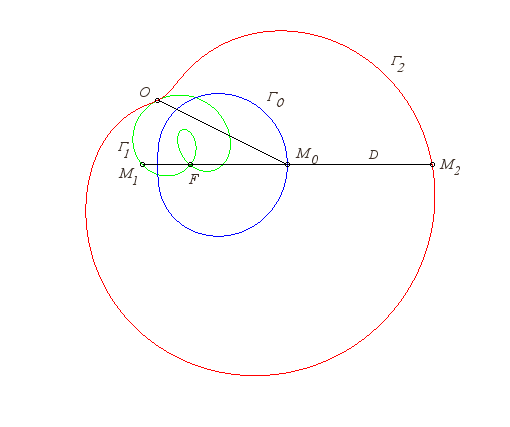
|
When the curve
is a line, O a point on this line and F a point outside this
line, the corresponding strophoidal curves are the strophoids
(right strophoids when (OF) is perpendicular to the line
).
| When the curve |
 |
| Construction of the strophoid of a circle, in the case
where O is on the circle and O, F and the centre of
the circle are aligned.
When F is on the centre of the circle, the strophoid is Freeth's nephroid. When F goes to infinity, the strophoid goes to a torpedo (see below). |
 |
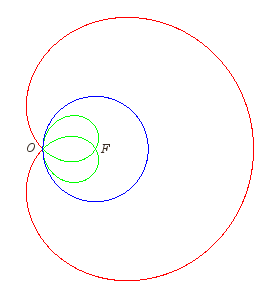 |
| Lorsque F est diamétralement opposé
à O, la strophoïdale se réduit à deux
cercles, centrés sur le cercle de départ, et de rayon |
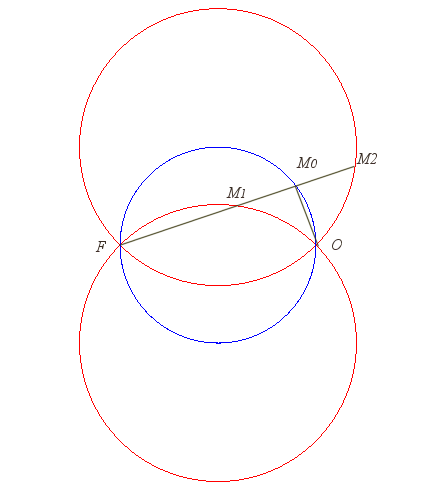 |
GENERALISATIONS
1) The point F is placed at infinity.
The strophoidal curve of a curve
with respect to a pole O and a line direction D is the locus
of the intersection points between a circle centred on M0
on the curve
and passing by O, and the line parallel to D passing by
M0.
The associated transformation is sometimes called "Brocard
transformation", since he studied it in the special case of a circle.
| For a line direction Ox and for an initial
curve Opposite, construction of one of the two branches. |
 |
Examples:
| When the curve |
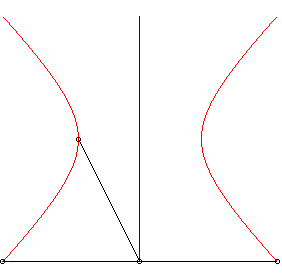 |
| When the curve |
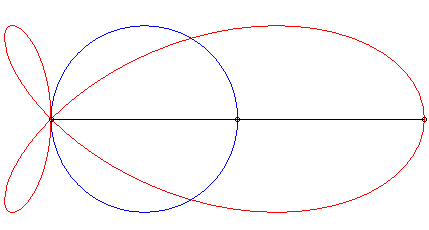 |
| When the initial curve is a parabola with focus O and parameter p, and the line direction is the axis of the parabola, one of the branches of the strophoidal curve is none other than the directrix while the other branch is a parabola with vertex O and parameter p/2. |
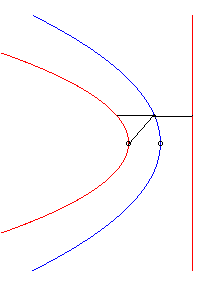 |
| When the initial curve is an ellipse
with focus O and the line direction is an axis of the ellipse, then
the strophoidal curve is composed of two other ellipses, with summits O.
A similar phenomenon occurs for the hyperbolas. |
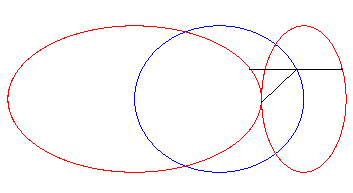 |
| When the initial curve is a hyperbolic spiral |
 |
2) The point O is replaced by a curve (idea of Pierre Daniel).
The strophoidal curve of a curve
with respect to a curve
and a fixed point F is the locus of the intersection points between
a circle centred on M0 on the curve
and tangent to the curve
,
and the line (FM0).
Here is a simple special case: the curve
is a line passing by F.
| With the axis Fy as the line Opposite, the example of the parabola |
 |
Another example:
| The strophoidal curve of an ellipse
(C) with fised point one of its foci F, with respect its
directrix circle centred on F, is composed of the directrix circle
itself and the conchoid with pole F and parameter 2a of the
image of the ellipse by the homothety with centre F and ratio 2
(indeed, with the notations of the figure:
FS = FC – CP = 2FC – 2a = FC' – 2a.). This strophoid is therefore a Jerabek curve. The same phenomenon occurs in the case of a hyperbola.
|
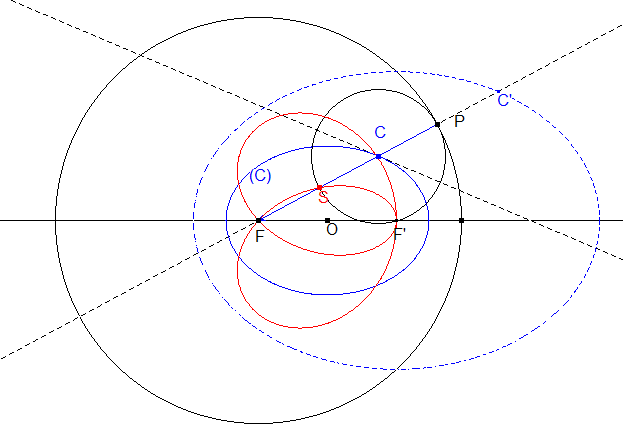 |
| next curve | previous curve | 2D curves | 3D curves | surfaces | fractals | polyhedra |
© Robert FERRÉOL 2021